The Mousai House — A Grass-Roots Model of a Cooperative Economy
Facing eviction from one of the last places for independent artists in Washington, D.C., a community banded together in a struggle against developers.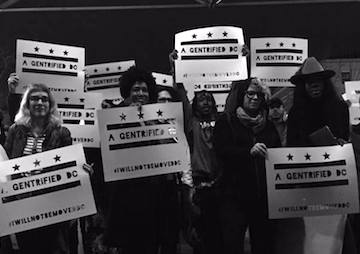 1
2
3
1
2
3
Ownership is a recurring theme in both the Mousai House story and the history of Black Washington. For generations, restrictive covenants, redlining, and race-based housing policies limited ownership opportunities for African-Americans in the district. Similar policies and practices in commercial real estate created the same dynamic. Collective ownership is a cornerstone of the next system Dr. Nembhard imagines. Not only should real estate be affordable and cooperatively owned; but ideally, it would also be completely decommodified.
The strong personal relationships and professional network that emerged from the Tuesday night sessions produced some leads for a new space. “Right when the lease was coming to an end one of my guitar students, Aaron Jackson, hit me up on the phone and said, ‘Hey, you remember the old Warehouse Loft?,’” Jones recalled. They discussed a potential opening at Union Arts, a DIY arts space which had taken over the building formerly occupied by the infamous Warehouse Loft parties. There was indeed an opening, and two weeks later the Mousai House relocated to 411 New York Avenue NE.
In many ways, the move was a good thing. The partnership with Union Arts meshed together artistic communities and created opportunities for new collaborations. The move also triggered a deeper exploration of the flaws in DC’s creative economy and generated lots of discussion around alternatives. The goal was to develop a space for artists that was both equitable and sustainable. It became clear that that would require some major systemic changes. “It would require a re-construction of the arts scene as it’s currently built,” Jones explained. “Currently it’s built without artists understanding business because they don’t learn that at Howard [University]. They learn how to be better at guitar, if you majored in guitar, but they don’t teach you anything about how to get gigs, how to talk to venues, how to know your worth, how to hustle, how to get your music out there. They don’t teach you any of that. So it would have to change from the education at its foundation. And it would have to change in the mindset of people.”
Education is central to cooperative economic development. Dr. Nembhard envisions a society where we “require cooperative and solidarity economics literacy from kindergarten to college.” This would happen both formally and informally, both inside and outside of traditional educational institutions. Dr. Nembhard explains that in order for a cooperative solidarity commonwealth to thrive, “we must all know and understand cooperatives and the solidarity economy better than we understand capitalism.”
The Mousai House is an example of peer-led informal cooperative education. Together they’re developing a shared analysis of the current creative economy. “I love the story of the jazz musicians in the city because it’s literally what’s happening all over the country; but it’s here more than anywhere else,” Jones shared. “They’ll go to school, they have forty grand in debt, they get out and now they have to fight other just as talented jazz musicians – Howard puts out a slew of them, Duke Ellington puts out a slew of them – for a hundred dollar gigs a head. You practice, you rehearse, and then you’re playing for tips at a coffee shop. The whole band splits a hundred dollars.”
After Mousai took off in its first few years, Jones left his job to help create a structure for the organization so that it could continue. In order to help cover costs for the new space, Mousai developed a membership structure. Monthly memberships range in price from thirty to fifty dollars. The basic membership includes access to a shared work space, entrance to the Tuesday night classes and the jam sessions that follow, and discounted tickets to the concerts that happen on the last Saturday of each month (past performers include the legendary hip hop icon Bahamadia and the prolific LA-based musician Georgia Anne Muldrow). Resident artist members also get discounted studio time, and access to other resources and support.
The membership structure helps Mousai artists pool their resources to maintain affordability and cover the shared costs of the space. And it’s just the beginning of a larger vision of a cooperatively-owned artist incubator.
From the time the Mousai House arrived at Union Arts, there were murmurs that the building could be sold at any moment. The warehouse had been on the market since 2012. In January 2016, Mousai and the other artists at Union Arts received notice that the building had been sold to developers and was slated to become a boutique hotel. They had less than nine months to prepare for their impending eviction.
For Mousai, lightning had struck twice. They were once again facing displacement, this time from one of the city’s last remaining independent arts spaces. Instead of simply packing their bags, Mousai joined forces with Union Arts, the Nomad Yard Collectiv and over 100 artists to form the Artists Union. Using the social media hashtags #SaveDCArts, #iWillNotBeMoved, and #aGentrifiedDC, the artists banded together in a David and Goliath fight against the developers.
Dr. Nembhard insists on the correlation between cooperative membership and civic participation. “The theory of change behind this model of a cooperative solidarity commonwealth is that the more people that practice economic democracy, collective ownership, and economic transparency, the more they will come to expect to see these practices in the rest of their lives.” The relationships that Mousai members were able to create through years of music lessons and jam sessions extended beyond music. They had now entered the political arena. In a photo on the Artists Union’s Facebook page, Dior Ashley Brown is standing front and center outside of a DC Zoning Commission Hearing where over one hundred artists showed up to demand that the city act to stop the displacement of artists. Ironically, in the developer’s proposal for the new hotel, they claim they will “provide desperately needed art studio and gallery space for local residents and students.”
CulturalDC, a DC-based non-profit, is partnering with the developer to manage the arts spaces in the building. Two floors of the eleven-story hotel will house eight artist studios, a gallery and an art classroom. According to existing tenants, this will provide space for only a fraction of the number of artists that currently utilize the space.
Your support matters…Independent journalism is under threat and overshadowed by heavily funded mainstream media.
You can help level the playing field. Become a member.
Your tax-deductible contribution keeps us digging beneath the headlines to give you thought-provoking, investigative reporting and analysis that unearths what's really happening- without compromise.
Give today to support our courageous, independent journalists.

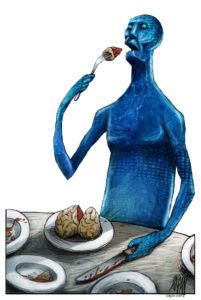
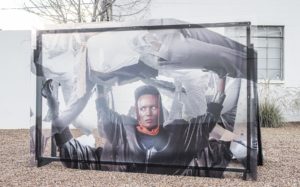

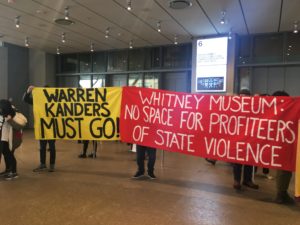
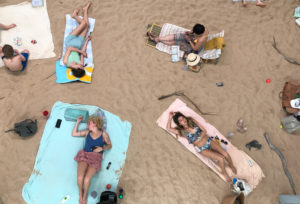
You need to be a supporter to comment.
There are currently no responses to this article.
Be the first to respond.